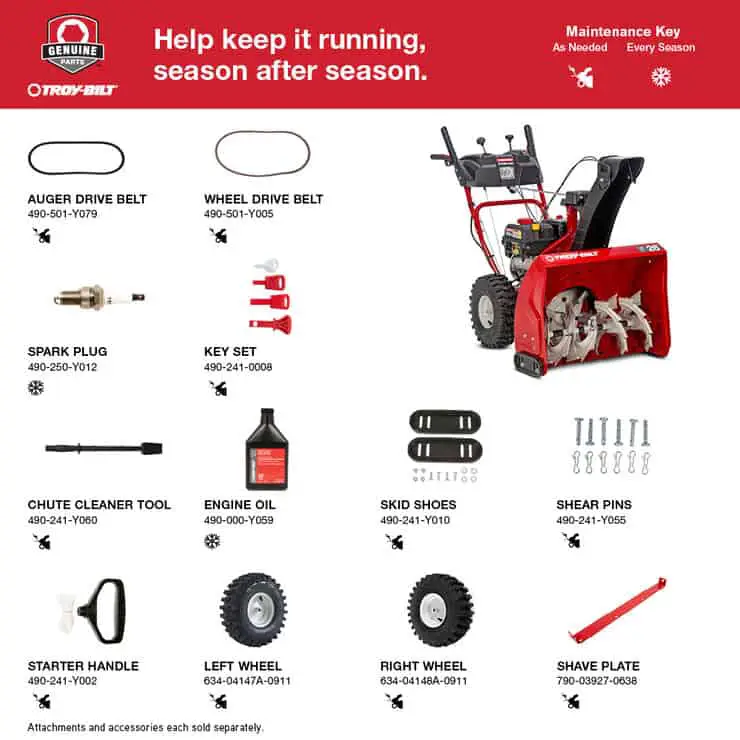With its robust design and cutting-edge technology, the snowblower has become an indispensable companion for those living in regions blessed with abundant snowfall. This engineering marvel has revolutionized how we battle the elements during the frosty season, rendering shovels and sweat-soaked brows a thing of the past.
A symphony of power and efficiency, the snowblower stands ready to confront even the most formidable snowdrifts. Picture a compact yet sturdy housing unit housing a formidable auger or impeller mechanism, eager to chew through the frozen obstacle before it. The drill, equipped with sharp blades or robust paddles, tirelessly breaks up the snow while simultaneously scooping it into the belly of the machine.
In the last article, we learn everything about snowblowers.
Starting fluid, also known as starter fluid or ether, can create a problematic engine. Here are general steps on where to spray starter fluid on a snowblower.
Where to Spray Starter Fluid on Snowblower?
It would help if you sprayed started fluid on Snowblower in the air intake located at most models under a plastic cover near the choke lever. Please follow the steps:
- Locate the air intake or carburetor: This is typically near a snowblower’s engine or gas tank. The carburetor mixes air and fuel for combustion in the machine. For many models, you can find it behind the air filter or under a plastic cover near the choke lever.
- Remove the air filter: The air filter will usually be in a casing that you can open by unscrewing a few screws or unclipping some clips. Be careful not to damage the air filter.
- Spray the starter fluid: Spray a small amount into the carburetor or air intake. Do not spray too much, as this can flood the engine and make the situation worse. Usually, a 1-2 second spray is sufficient.
- Replace the air filter: Once you have sprayed the starting fluid, replace it and any casing or screws you had to remove to access it.
- Start the snowblower: Try to start the snowblower immediately after applying the starter fluid. If the engine was struggling due to cold conditions or a small amount of water in the fuel, the starting fluid should help the engine to ignite.
Please note that using starter fluid is a temporary solution, and if your snowblower is consistently hard to start, a professional should inspect it. Always follow the manufacturer’s instructions and safety precautions when starting fluid and working on your snowblower.
Where is the air intake on a Snowblower?
Here is a more detailed guide to help you locate the air intake or carburetor on your snowblower:
- Find the engine: Begin by locating your snowblower’s engine. It’s the most significant part of the machine and is usually positioned near the center or back. The carburetor is typically mounted on the side of the engine.
- Identify the gas tank and air filter: The gas tank and air filter are two other components that can help you locate the carburetor. The gas tank is usually at the top of the engine, while the air filter is often housed in a plastic casing attached to the carburetor.
- Follow the fuel line: The carburetor is connected to the gas tank by a fuel line, a small tube that transports fuel from the tank to the carburetor. If you follow this line from the gas tank, it will lead you to the carburetor.
- Look for the choke and throttle controls: The carburetor is usually close to the choke and throttle controls. The choke control, in particular, is directly linked to the carburetor. When engaged, the choke lever restricts the amount of air entering the carburetor, enriching the fuel-air mixture, and making the engine easier to start in cold conditions. The throttle controls the speed of the machine.
- Inspect the area near the spark plug: The carburetor and spark plug are typically in the same vicinity. The carburetor should be nearby iSo if you can find the spark plug wire and where it’s attached.
Once you’ve identified the carburetor, the air intake should be proper before it, typically protected by an air filter housed in a plastic or metal casing. Remember, the exact location can vary based on the make and model of your snowblower. If you’re having trouble finding it, consult your snowblower’s owner’s manual or look up a diagram online for your specific model.

